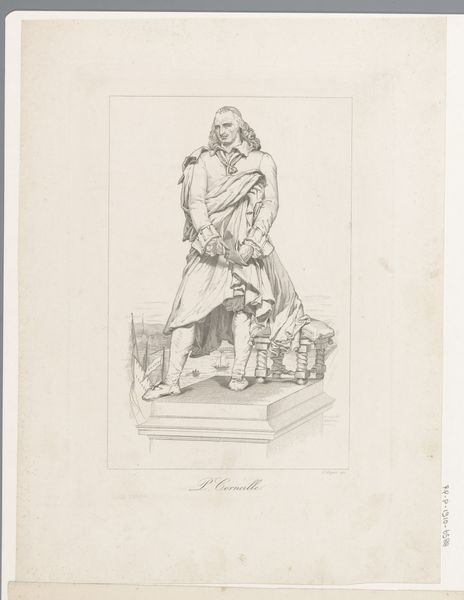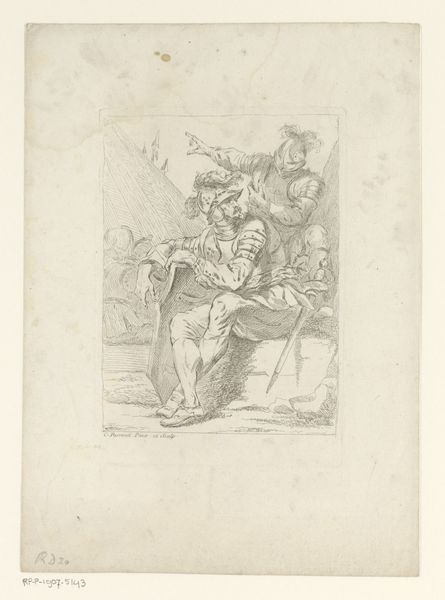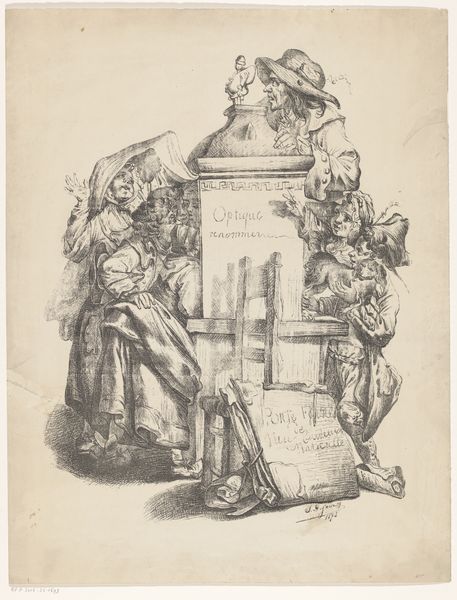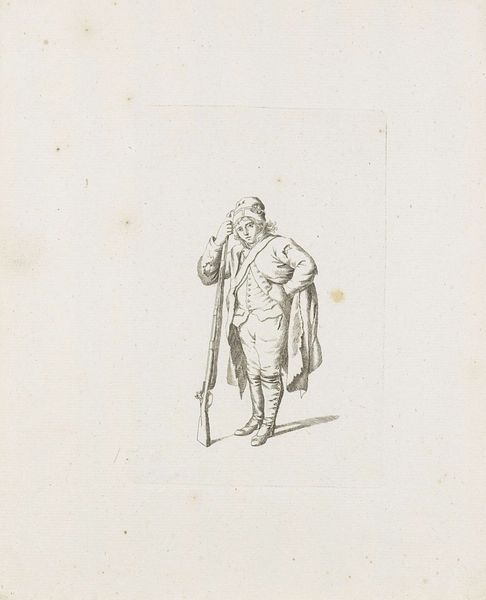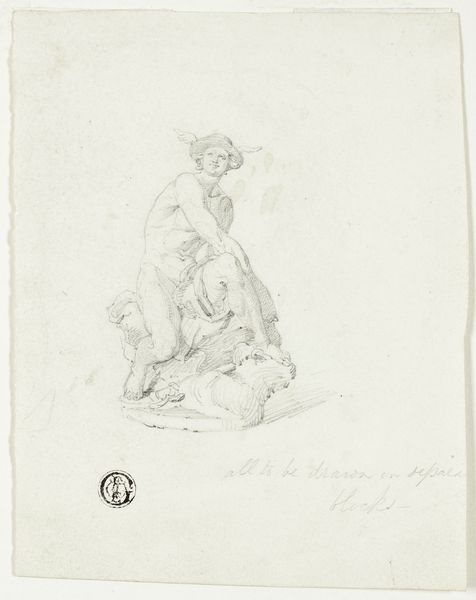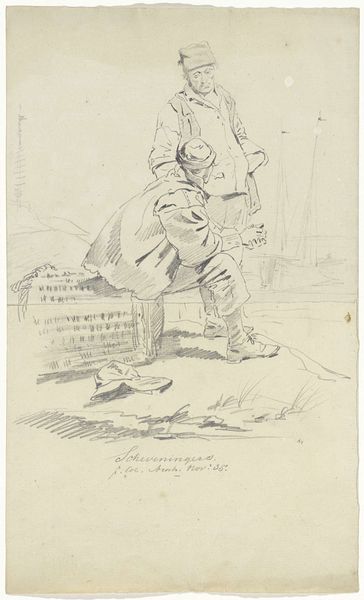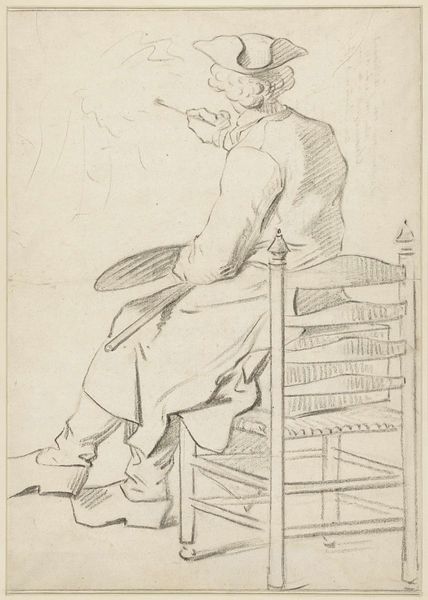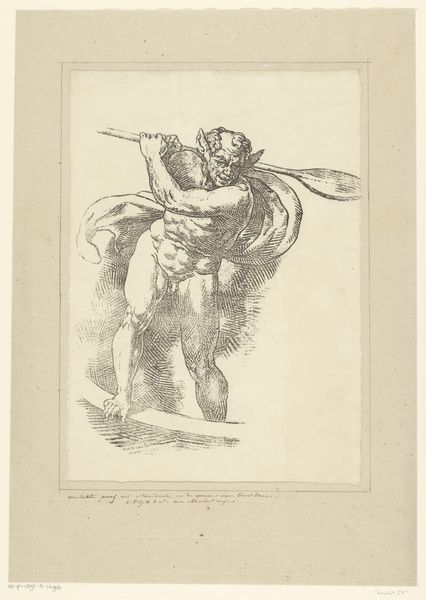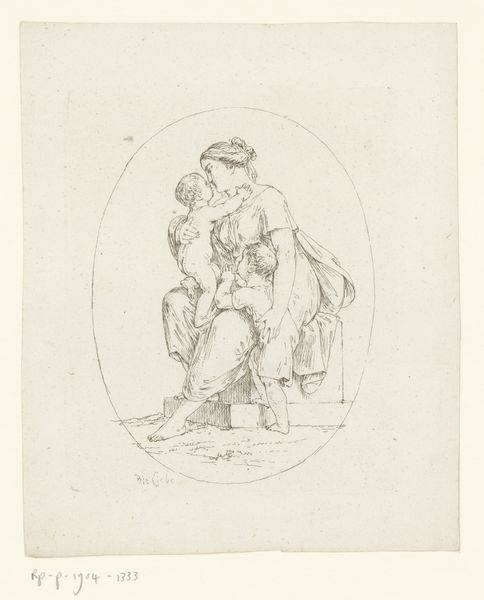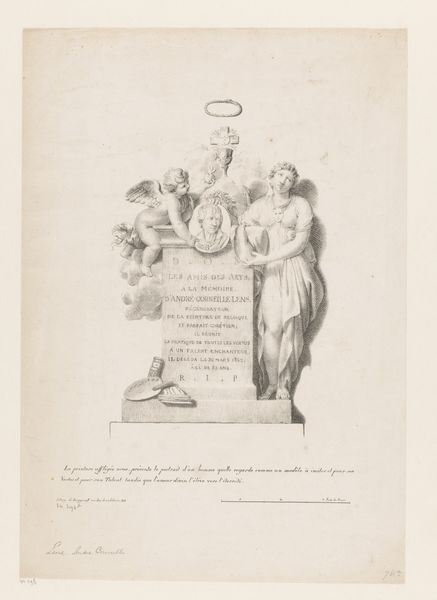
drawing, ink, pen
#
portrait
#
drawing
#
comic strip sketch
#
narrative-art
#
pen illustration
#
pen sketch
#
personal sketchbook
#
ink
#
ink drawing experimentation
#
romanticism
#
pen-ink sketch
#
pen work
#
sketchbook drawing
#
pen
#
storyboard and sketchbook work
#
sketchbook art
Dimensions: height 203 mm, width 192 mm
Copyright: Rijks Museum: Open Domain
Curator: The drawing we’re looking at is called "Nakomeling lezend over de historie van de tegenwoordige tijd, 1796," which translates to "Descendant reading about the history of the present time, 1796." It's rendered in ink and pen, made sometime between 1795 and 1845 by an anonymous artist. Editor: It’s a remarkably melancholic image. The subject seems caught between reading and… well, despair? His face is contorted in a grimace, and he holds what looks like a crumpled handkerchief. The wispy lines create a sense of unease, almost frantic energy. Curator: I see this drawing as a response to the shifting socio-political landscape of Europe during the late 18th and early 19th centuries. The title itself is laden with commentary, suggesting a skepticism towards contemporary narratives of history and perhaps the futility of present-day life. It ties into Romanticism’s skepticism about modernity. Editor: Yes, but notice how the stark lighting, with those incredibly light, scratchy marks, emphasizes the tension of the moment. The book he's reading seems almost to be a source of torment rather than enlightenment. It's also about this feeling of dramatic intensity rendered on paper through simple gestures like that pinched face. Curator: True, the image does evoke emotional turmoil. Considering its potential origins during the Batavian Republic in the Netherlands or during the Napoleonic Wars, this intense reaction to historical texts could mirror a broader public disillusionment with revolutionary ideals or fears about societal collapse. Editor: The use of stark ink lines also enhances the sense of drama and romantic longing that’s indicative of early Romantic era aesthetics. It reflects the human interest of sublime ideals crashing headfirst into human limits and experience. There is something visually tragic about the fact that a man is overwhelmed by something contained in something so ostensibly banal as a bound book. Curator: It's fascinating how this simple drawing becomes a poignant commentary on history, memory, and the human condition. Thank you for pointing out some interesting aesthetic components of this intriguing artwork! Editor: My pleasure. I found myself really captured by how raw the formal simplicity of this artwork brings such complexity to bear.
Comments
No comments
Be the first to comment and join the conversation on the ultimate creative platform.
